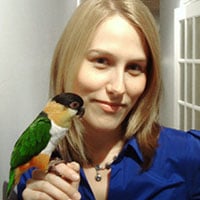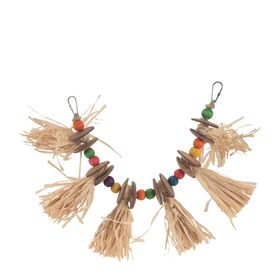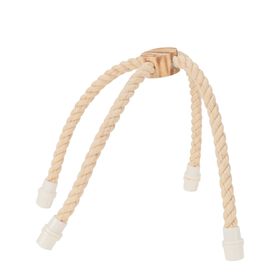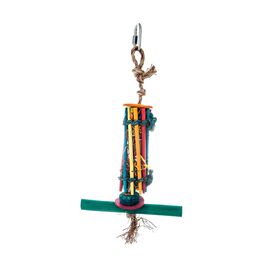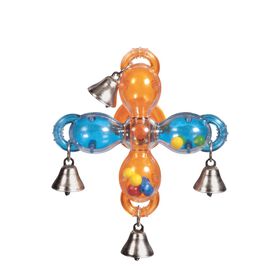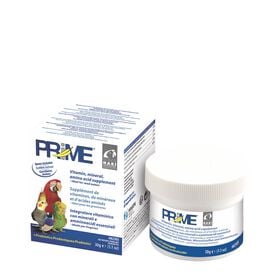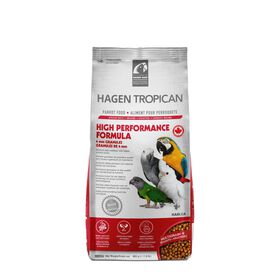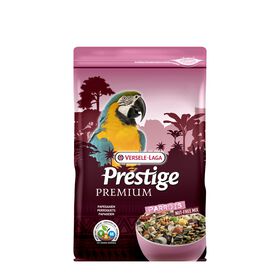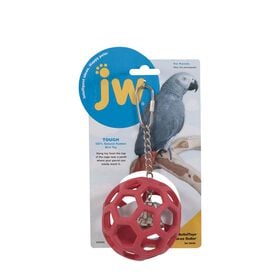Birds, especially parrots, are very intelligent. They need mental and physical stimulation every day to be happy in captivity. The following are a few ideas for improving their quality of life on a daily basis.
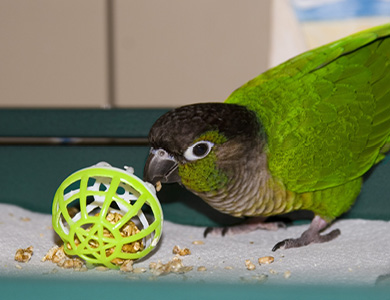
Mental stimulation for birds
Training is very stimulating for birds, whether you’re teaching them skills or simply tricks. Positive reinforcement (the use of a treat or praise to reward good behaviour) is the best scientifically recommended method of training a bird. Foraging consists in having animals work for their food, and is an excellent way of providing your bird with mental and physical stimulation. Highly instinctive, your bird would spend 70% of its active time searching for food in nature. In captivity, since food is too easily accessible, many birds become bored. Occupying your bird and making it work for its food allows it to expend time and energy, and to think. The result is a parrot that is calmer and happier in the evening when you get home from work. Birds prefer working for their food rather than getting it out of a bowl. All birds, regardless of their size or level of intelligence, can learn to forage.
Here are the steps to follow when introducing your bird to foraging:
- Start by hiding a treat in a paper ball or add a bit of shredded paper to the bird’s usual food bowl.
- Gradually increase the level of difficulty, while ensuring that the bird is always able to access the food.
- It’s so easy to plan a variety of foraging activities without spending a cent. Wrap the bird’s food bowl or the actual food with paper, hide treats inside cardboard food boxes, and keep brown paper bags and empty paper towel rolls handy for the bird’s benefit.
- Foraging plates are really easy to make. Take a flat container (platter, sturdy plastic or paper plate), place some food in it, hide the food under various items (shredded paper, pasta or wooden beads) and place the plate within the bird’s reach. The more the bird gets used to foraging, the more you increase the thickness of substrate over the food.
- Once the bird understands the principle and becomes more experienced, you can use a number of available commercial toys to hide food. Gradually make the food harder to uncover to keep your bird occupied during the day.
If your bird doesn’t understand the principle, go back a step. A number of resources are available to give you ideas. The following are two very good references:
Foraging for Parrots
Avian Enrichment
Using foraging to stimulate your bird’s five senses
Hearing
In general, birds appreciate music. Try different musical genres or turn on the radio to keep your bird occupied while you’re away. Classical music is often a favourite genre, although many birds also enjoy a bit of rhythm. However, be aware that music containing nature sounds and sounds of birds of prey can be stressful for your pet.
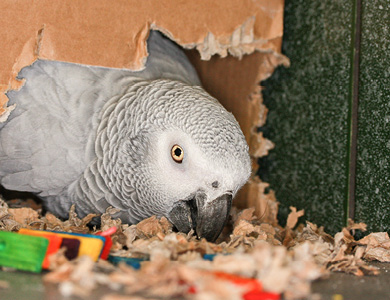
Sight and touch
It’s very important to provide your bird with toys of varying colours, shapes and sizes, and made of different materials. It’s preferable to choose destructible materials, such as paper, cardboard or wood, to satisfy your parrot’s chewing needs. Place a minimum of three different toys at once in the bird’s cage, and change them at least once a month. A toy that stays in the cage too long becomes boring, while changing toys regularly maintains the bird’s interest. Placing the cage near a window can be interesting for your bird, but always make sure there’s a corner of shade available so the bird doesn’t get too hot. If the bird is nervous, being exposed to a window may be too stressful. Conduct a supervised test to see how the bird reacts. Placing part of the cage in front of a window and the other part behind a wall can provide the bird with more intimacy. It’s important to regularly give your bird a bath or shower once or twice a week. A shallow bowl filled with lukewarm water is usually ideal for small birds. For larger birds, a vaporizer (never one used for chemicals) is a good option. Gently mist above the bird so that the water simulates a rain
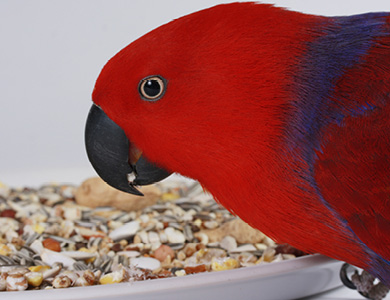
Taste and smell
Offer your bird a wide range of foods. Its diet should be composed mainly of a combination of high-quality seeds grains (depending on the species), and fruits and vegetables, as well as the occasional treat. Be sure to learn about which foods are toxic and not recommended. Also, since birds are very sensitive to fat, monitor the levels of fat in their diet.
Make sure you have fun during each training session and keep your pet occupied throughout the process. Happy training!

